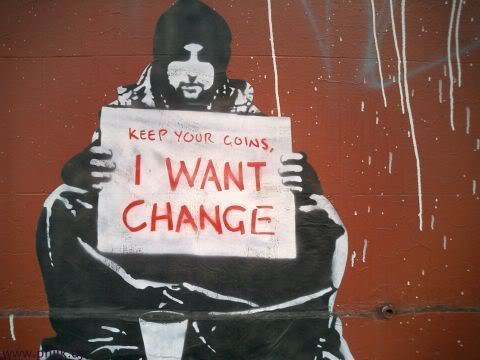Whether you wander around a modern art museum with your eyes glazed over or find yourself contemplating the title of Marcel Duchamp’s porcelain urinal, most of us have been confronted with the question: “What is art?”
In his 2010 documentary, Exit Through the Gift Shop, director and elusive street artist Banksy critically explores how artistic expression, intent and audience are central to the value of art. The narrative follows Mr. Guetta, a French thrift shop-owner-turned-documentary-maker, through his encounters with various street artists. Inspired by the work he is filming, Guetta begins his own street art expeditions; by 2008, has put together his first show, “Life Is Beautiful” under the name “Mr. Brainwash.”
Whether the Frenchman’s story is constructed by Banksy or not, the documentary’s stance is clear: purely commercial art loses some of its merit in comparison to deliberate and creative work.
Although it does not directly address the issue, Exit Through the Gift Shop prompts us to question whether street art’s place in the “concrete jungle” is necessary to its unique contribution to the art world.
It’s convenient to see public murals as solely aesthetic or thought-provoking art pieces that happen to use the “concrete jungle” as their canvas. But since the time of its conception, street art has had a distinct role in using public space to reflect or comment on the current socio-political climate. In the 1960s, one of the earliest graffiti artists first applied the concept of tagging— previously used only by gangs to mark their territory— to public work. Now, fifty years later, Pasqualina Azzarello paints flowers on a construction fence in New York City to contrast “a world that feels very corporate.”
What still unifies the vastly different types of street art today is their incorporation into urban features. Street art inherently engages with the rich landscape of the city, creating a display that cannot be translated. in any other setting without shifting the intent and meaning of the piece. Context is the key here, in a way gallery shows can’t replicate.
By virtue of being so exposed, street art also creates an open forum for communication about culture and politics. The same might be said of museums and art shows, but urban art makes its content accessible in a unique way; Parisian urban artist Blek le Rat explains that “this movement is the democratisation of art: if the people cannot come to the gallery, we bring the gallery to the people!” When art is in plain view, the artists can’t explicitly chose an audience; their pieces are equally exposed to the critical interpretation of any passerby.
The imposed transience of urban art (as buildings are renovated, torn down, and constructed) gives the medium a consistent dynamism and regeneration that seems to capture life in real-time. As NYC-based artist MOMO points out, “it is interesting how quickly a city replaces all of its cells.” Each piece’s fleeting display forces the artist to create something attention-grabbing and arguably liberates the artist to be bold.
In this context, the growing phenomenon of gallery expos to showcase street art seems contradictory to the medium’s very nature. In capitalizing on public interest in urban art, these shows have also adjusted the medium’s audience, intent, longevity, and context in a way that unintentionally undermines its value. The internet has had a similar influence on communicating urban art; with its online forums for picture-sharing and auctioning, the web has removed street art from its necessary environment. No doubt, larger audiences are being reached and a certain permanence is achieved as street art is commercialized. But we are losing the essence of the medium in the very process of publicizing it.
photo: “mincorrigible.wordpress.com”





